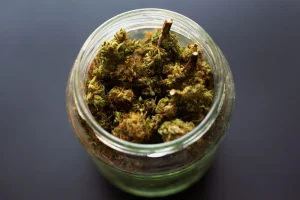Uncategorized
Nausea: Unveiling the Power of weed for nausea relief
Unlocking the Healing Potential: Exploring Weed for Nausea Relief
Nausea, an unsettling sensation in the stomach often accompanied by an urge to vomit, can disrupt daily life and leave individuals feeling debilitated. While various remedies exist, one option gaining traction for its potential effectiveness is weed. In this comprehensive guide, we delve into the benefits of using weed for nausea relief, exploring its efficacy and potential impact on well-being.
Understanding Nausea: A Complex Symptom

Nausea, often described as an unsettling sensation in the stomach accompanied by a strong urge to vomit, is a multifaceted symptom with both physiological and psychological dimensions. While its exact causes can vary widely from person to person and situation to situation, understanding the underlying mechanisms of nausea is essential for exploring the potential effectiveness of weed for nausea relief. Physiologically, nausea can be triggered by a variety of factors, including disruptions in the digestive system, inner ear disturbances, and certain medications or medical treatments. Additionally, psychological factors such as anxiety, stress, and anticipation of unpleasant experiences can exacerbate feelings of nausea. By recognizing the intricate interplay of these physiological and psychological components, we can begin to appreciate the complexity of nausea and the potential role of weed for nausea relief.
The Science Behind Weed’s Anti-Nausea Properties
Weed, often referred to as cannabis, boasts a rich array of compounds known as cannabinoids, each wielding unique effects on the human body. While the plant contains over a hundred cannabinoids, two primary players, THC (tetrahydrocannabinol) and CBD (cannabidiol), emerge as frontrunners in the realm of nausea relief.
THC, renowned for its psychoactive properties, interacts with the body’s endocannabinoid system, a complex network of neurotransmitters and receptors involved in regulating various physiological functions, including appetite, mood, pain sensation, and yes, nausea. By binding to cannabinoid receptors (CB1) located throughout the central nervous system and peripheral tissues, THC modulates neurotransmitter release, ultimately dampening the brain’s emetic response and mitigating feelings of nausea and vomiting.
CBD, on the other hand, takes a more indirect route in combatting nausea. Although it does not bind directly to cannabinoid receptors like THC, CBD exerts its anti-nausea effects through various mechanisms, including serotonin receptor modulation, anti-inflammatory properties, and interaction with transient receptor potential (TRP) channels. By influencing serotonin receptors implicated in nausea regulation and quelling inflammation in the gastrointestinal tract, CBD offers a multifaceted approach to alleviating nausea symptoms.
The intricate dance between THC and CBD within the endocannabinoid system highlights the multifunctional nature of weed in targeting nausea. As researchers continue to unravel the complexities of weed’s anti-nausea properties, the potential for harnessing its therapeutic benefits in managing nausea-related conditions becomes increasingly apparent. In the quest for effective nausea relief, weed emerges as a promising ally, offering natural and holistic solutions for those in need.
Weed vs. Traditional Nausea Medications: A Comparative Analysis
In this detailed segment, we embark on a comprehensive analysis, pitting the efficacy and side effects of weed for nausea against those of traditional medications like antiemetics. Through a thorough examination of clinical studies and anecdotal evidence, we endeavor to offer readers a nuanced understanding of the comparative landscape between weed for nausea relief and established pharmaceutical treatments. By delving into the scientific data and real-world experiences, we aim to shed light on how weed stands in the realm of conventional therapies, providing valuable insights for individuals seeking effective remedies for nausea symptoms.
Weed Strains for Nausea Relief: Finding the Right Fit
Not all weed strains are created equal when it comes to alleviating nausea. From uplifting sativas to relaxing indicas, we explore which strains are most effective for targeting nausea symptoms. Additionally, we discuss terpenes and other compounds that may enhance weed’s anti-nausea effects.
Weed Consumption Methods: Which Is Best for Nausea Relief?

When exploring the realm of weed for nausea relief, understanding the most effective consumption methods is paramount. Weed, known for its versatility, can be ingested through smoking, vaping, consuming edibles, or using tinctures. Each avenue presents its own set of advantages and drawbacks in alleviating nausea symptoms. For instance, smoking and vaping offer rapid onset times, making them ideal for acute nausea episodes where immediate relief is desired. On the other hand, edibles and tinctures provide a longer-lasting effect, offering sustained relief for chronic nausea. By delving into the nuances of each consumption method, individuals can tailor their approach to weed for nausea management, ensuring optimal efficacy and comfort.
Weed for Specific Nausea Triggers: Tailoring Treatment Approaches
Nausea is a multifaceted symptom that can arise from a diverse range of triggers, spanning from chemotherapy-induced nausea in cancer patients to nausea associated with migraines, motion sickness, and gastrointestinal disorders. Each trigger presents its own set of challenges and nuances, requiring a tailored approach to treatment. In this section, we delve into the intricate ways in which weed can be customized to address specific nausea triggers, offering targeted relief and enhancing the quality of life for individuals grappling with various underlying conditions. By understanding the unique needs and symptoms associated with each trigger, individuals can optimize their use of weed as a therapeutic aid in managing nausea and reclaim control over their health and well-being.
Navigating Legal and Social Considerations

The legal and social landscape surrounding weed for nausea relief requires a nuanced understanding of its evolving status. While many regions have seen a shift towards acceptance of cannabis for medicinal purposes, legal frameworks vary widely, with some areas embracing full legalization, while others maintain strict regulations. Furthermore, social stigmas persist, stemming from decades of prohibition and misinformation. Despite these challenges, individuals seeking relief from nausea symptoms can navigate these considerations by staying informed about local laws and regulations, advocating for change where necessary, and engaging in open dialogue to challenge misconceptions surrounding weed use. By empowering themselves with knowledge and advocating for responsible cannabis consumption, individuals can navigate the legal and social complexities while accessing the potential benefits of weed for nausea relief.
Embracing the Potential of Weed for Nausea Relief
In conclusion, the potential of weed as a natural remedy for alleviating nausea symptoms and enhancing overall well-being is substantial. By delving into its mechanisms of action, individuals can gain deeper insights into how cannabinoids interact with the body’s endocannabinoid system to mitigate feelings of nausea. Moreover, the selection of appropriate strains and consumption methods is paramount in optimizing the therapeutic effects of weed for nausea relief. Whether opting for uplifting sativas or calming indicas, understanding the nuances of each strain allows individuals to tailor their treatment approach to their specific needs and preferences. Additionally, navigating the legal and social considerations surrounding weed use is essential for ensuring safe and responsible consumption. By staying informed and advocating for responsible cannabis use, individuals can confidently embrace the potential of weed for nausea relief, empowering themselves to reclaim control over their health and well-being.


